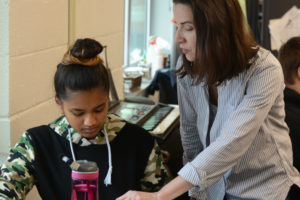For the second year in a row, math teacher Linda Della Corna implemented the 20 Percent Project in all of her math classes. According to Google’s management philosophy, spending 20 percent of work time dedicated to an outside project can yield creative progress. Over the course of three months, students design a project to combat an issue within their community.
Projects range from community-service based problems, such as recycling projects, to personal projects, such as learning a new language. Students keep the teacher updated with new blog posts every three weeks and present their finished product at the end of the year.
“The topic that my partner and I chose is related to the amount of screen time children get, how it affects them and encouraging playing non-electronic games,” sophomore Julianna Land said.
Land said she plans to hold board game donations in order to collect enough games to have a table set up in the library during Learn.
“I want to help children enjoy their time without technology,” Land said. “My little brother is autistic, and he easily develops strong habits, one of the strongest being him enthralled with video games and being unable to focus on anything else.”
Sophomore Ethan Nguyen said the project has become a chance to direct his passion for money into stock investment.
“I want to solve wealth inequality, so my partner and I are investing in stocks,” Nguyen said. “If two high schoolers can invest in stocks, so can the average American.”
Though the projects do not need to be related to math, Della Corna said she thinks they can all be connected back to the subject.
“Math is about problem solving, and by working on a project that students care about, they are using all the skills that we teach all the time in math,” Della Corna said.
While reflecting upon the project, Land said she appreciates the benefits that come with it.
“Rather than spending all of class doing math problems, we have the chance to devote our time to something we strongly care about,” Land said.
Though Della Corna said she implemented the project only throughout her math classes, she said she hopes to expand it to other departments as years go on.
“I think education works best that way,” Della Corna said. “They are working on something that they care about.”

